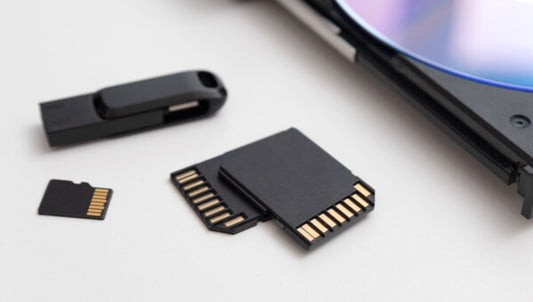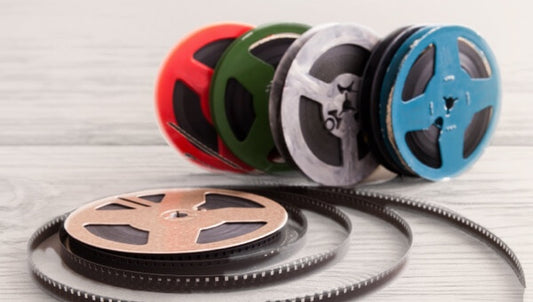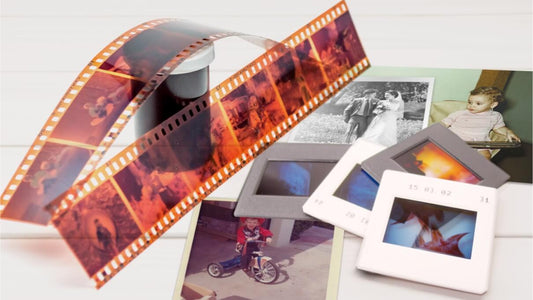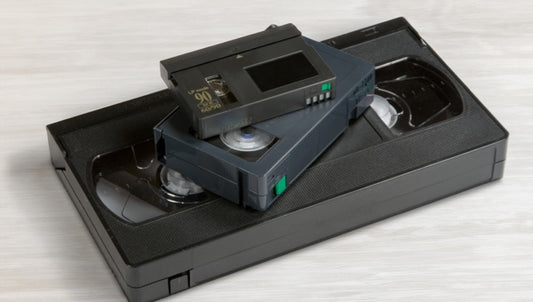If you want to watch VHS tapes that contain your home movies or the biggest movies from the 1980s and 90s, then you need a VCR. This begs the question, do they still make VCRs, or would you have to buy an old, pre-owned VCR?
For over 20 years, Capture has been dedicated to ensuring you and your loved ones can view your most precious memories. Since many people have memories contained on videotapes as well as old VHS VCRs, we put together this guide on VCR systems to help you out.
Keep reading to learn about the rise and fall of VCRs, how to still find a system to play home videos, tips for maintenance, and the value of VCR systems today.
Jump to:
- Answer to the Question, “Do They Still Make VCRs?”
- The Rise and Fall of VCRs
- Investigating VCR Production
- The Availability of VCRs
- Tips for VCR Maintenance
- The Value of Vintage VCRs
- Conclusion
Answer to the Question, “Do They Still Make VCRs?”

The short answer is no. No manufacturer still makes new VCRs and the last VCR to be made was in 2016 by Funai Electric. Most makers stopped making videocassette recorders long before then.
That’s because VHS movies were mostly replaced by DVD, Blu-ray discs, and digital video streaming. These options offered higher picture quality than old tapes. While you could still get a VCR/DVD combo or Blu-ray player for a while, making VHS recorders simply wasn’t profitable anymore because not many people continued to buy them.
The Rise and Fall of VCRs

The VHS tape was released by JVC in the late 70s and won the war with Sony Betamax tapes. By the mid-1980s, most families had a VCR system and numerous VHS tapes. With this came the rise in video stores and millions of VCR systems sold.
By 1987, 90% of the VCR market was based on VHS format with major manufacturers like Toshiba, Hitachi, JVC, and Matsushita producing VCRs. While there were Betamax VCRs, it was clear that VHS won the videotape war. Smaller options were released throughout the 80s and into the 90s including VHS-C, MiniDV, and Hi-8. These options were easier to use with a handheld camcorder and offered additional VCR technology advancements.
Even though DVD was released in 1997, the prevalence of VCRs would continue to last. In fact, in 2005, 95 million Americans still owned VHS VCRs. However, this was the beginning of the downfall of VHS systems and only a year later in 2006, the last movie ever to be produced in VHS format was released, “A History of Violence.”
Then, a 2007 US FCC mandate stated that all new TV tuners would include ATSC and QAM support. This encouraged major electronics manufacturers to end production of standalone units, with VCR/DVD combo decks being made since then. This was a nail in the existing coffin for VCRs, much like the lack of television support killed the LaserDisc years before.
The fact was the digital formats were not only cheaper but were higher quality, easier to make, worked on computers without complex adapters, and offered playback chapters instead of having to rewind or fast forward. That being said, you can still get VHS players today if you want to view your analog movies as they were originally intended to be viewed.
Investigating VCR Production

Currently, no company makes VCRs and there haven’t been any VCR manufacturing updates in a few years. In fact, if you want to know, “What is the VCR production status, “you’ll be hard pressed to find any news because they simply aren’t made by anyone anymore. They aren’t even made with combo DVD players anymore.
While the last VCR player was made in 2016, the prior state of VCR production varies by maker. Funai Electric, a Japanese electronics company that bought Magnavox audio and video operations in 2013, was the last to shut down production ending 33 years of VHS VCR manufacturing.
At one point, they had sold 15 million videocassette recorder systems per year, but that dropped drastically to only 750,000 in 2015. That number was only that high because they remained the only producer as well and would continue to drop.
In 2006, Variety magazine had already run an obituary for the VHS tape format. In 2002, Sony stopped producing Betamax recorders. Panasonic started selling VCRs in 1977 but stopped making them altogether in 2012.
Despite being considered obsolete or even “dead” over a decade ago, lots of people love VCRs and videotape formats because they offer nostalgia, easy recording, RCA connections to old televisions, and affordable physical cassette tape copies of your family memories.
The Availability of VCRs

Finding new VCRs at Walmart or Best Buy will be really tough in 2023, but you can still find high-quality Hi-Fi VCR systems in good condition or even refurbished if you know where to look.
You can get used and refurbished options on eBay and the Amazon marketplace. While there are some high-quality systems available on those platforms, it’s hard to tell if they are in good condition without buying them first, so it’s important to ask the seller about the system and features.
In addition, you can check out thrift stores in your area. This might offer the best way to see the VCR up close and make sure it has the remote control, clean connections, and other features like DVD player capability, Dolby Hi-Fi Stereo, VHS to DVD recording, HDMI connections, and other possible features.
Regardless of where you get your VCR, we recommend considering the image quality, sound quality, durability, availability of accessories, brand, and price. Some VCRs will produce a higher-quality image for an affordable price while others may be overly expensive despite not offering good quality or durability simply because they are rare.
Finally, if you don’t want to buy a VCR there are other options to view your VHS home movies. You can watch them on a camcorder if you have one. While this makes it hard to share them with others, it’s an option just to view videotapes again.
Another option is to convert your VHS tapes to digital format. This preserves them forever and makes it easier to view and share them over social media and email. Plus, you can simply store them in the cloud or on a hard drive. Capture offers high-quality videotape to digital services to preserve your precious memories for future generations.
Tips for VCR Maintenance

If you have or buy a VCR, it’s important to maintain it simply because you can’t buy a new VCR. If something does go wrong, then you may be able to find a local or online VCR repair service, but your best bet is to avoid that whenever possible.
There are a few enemies of cassette recorders including moisture, dust, heat, and videotapes in poor condition. Always store your VCR in a cool and dry place. Also, avoid leaving a tape in the videocassette recorder for a long time. It’s best to remove the tape whenever you aren’t actively watching it.
One of the most common issues with VCR systems is dirty heads. To clean the heads, you will need to unplug the VCR, remove all screws, and dissemble the components. Then, use canned air to remove dirt and dust from the interior of the machine, and then use cotton and foam swabs to clean the video heads. Replace everything and test.
If you still have a problem, then you may have to seek help from a professional or buy replacement parts. However, you can also try lubricating the VCR if nothing else works. Add a drop of VCR lubricant oil to the tape guide after cleaning it with alcohol-soaked swabs.
The Value of Vintage VCRs

Since the answer to, “Do they still make VCRs?” is no, they are only becoming rarer and more valuable with time. Along with the current availability of VCRs, the nostalgia for old analog formats also contributes to the high-value VCR market status.
That being said, the latest VCR models and even less modern VCR models are simply not worth a ton of money because there is not much of a demand. You can buy decent VCR systems for as little as $25 and even the highest quality VCRs for sale in 2023 typically cost less than $300.
Collectors often prefer older VCR models as long as they have Dolby Sound and standard VHS capability. Some people also like combo VHS/DVD players or options that offer CRT television screens with built-in VHS systems.
To find out if you have a somewhat valuable VCR, check out similar models on eBay or ask people on analog videotape forums like Reddit’s r/VHS or videokarma.org.
Conclusion

While there are no VCRs in production today and the VCR manufacturing industry is mostly dead, the videotape left an impact on culture that still resonates. People adore the analog format for nostalgia and easy use, despite the digital format being of higher quality. Because of that, you can still buy, trade, and sell VCRs online.
If you have old VHS or other videotapes, like VCRs they are degrading. That’s why it’s so important to convert them to digital format so that your memories are never lost. Capture can convert your memories into high-quality digital format as well as DVD or USB copies. Click here to learn about our video digitization services.










